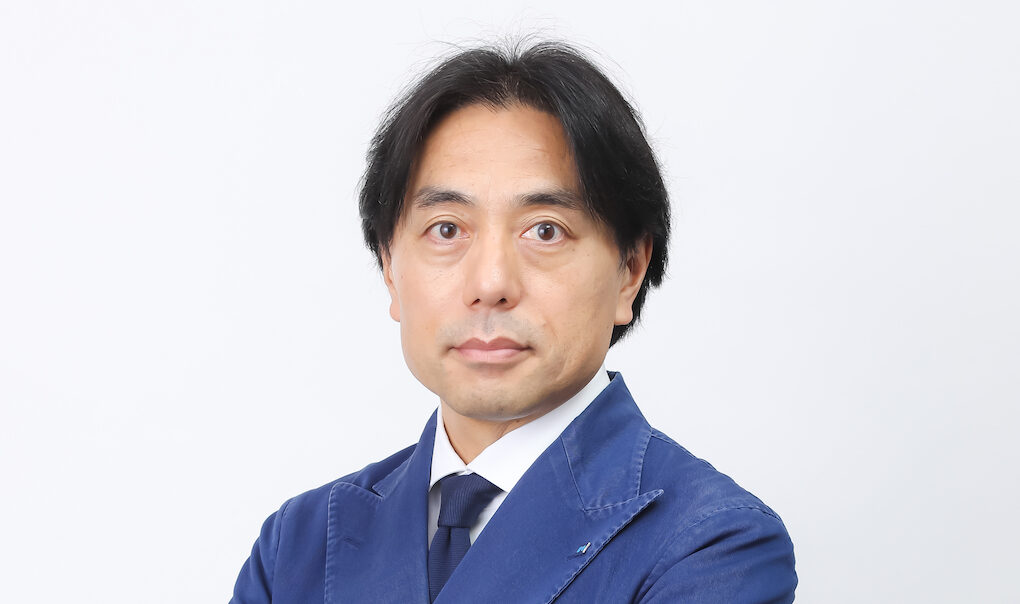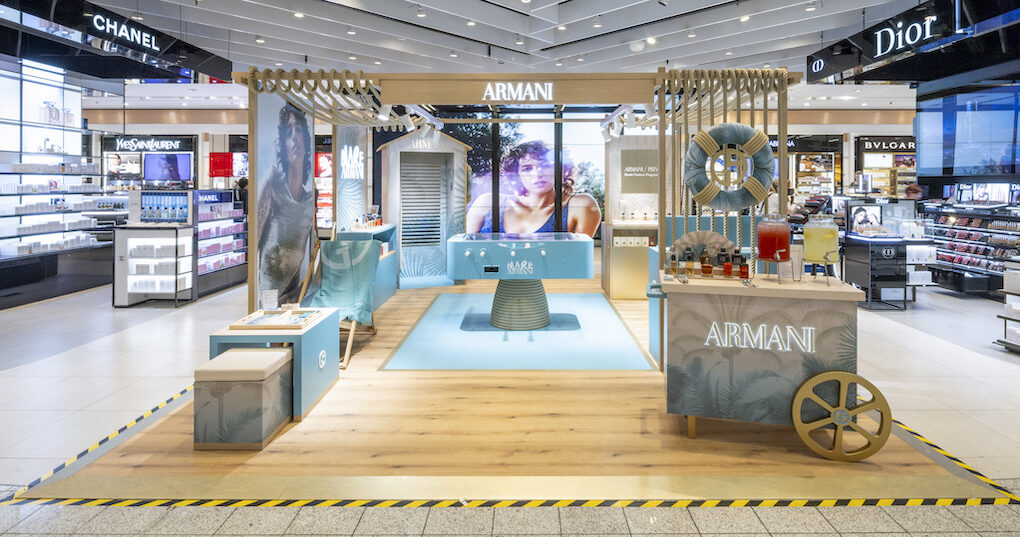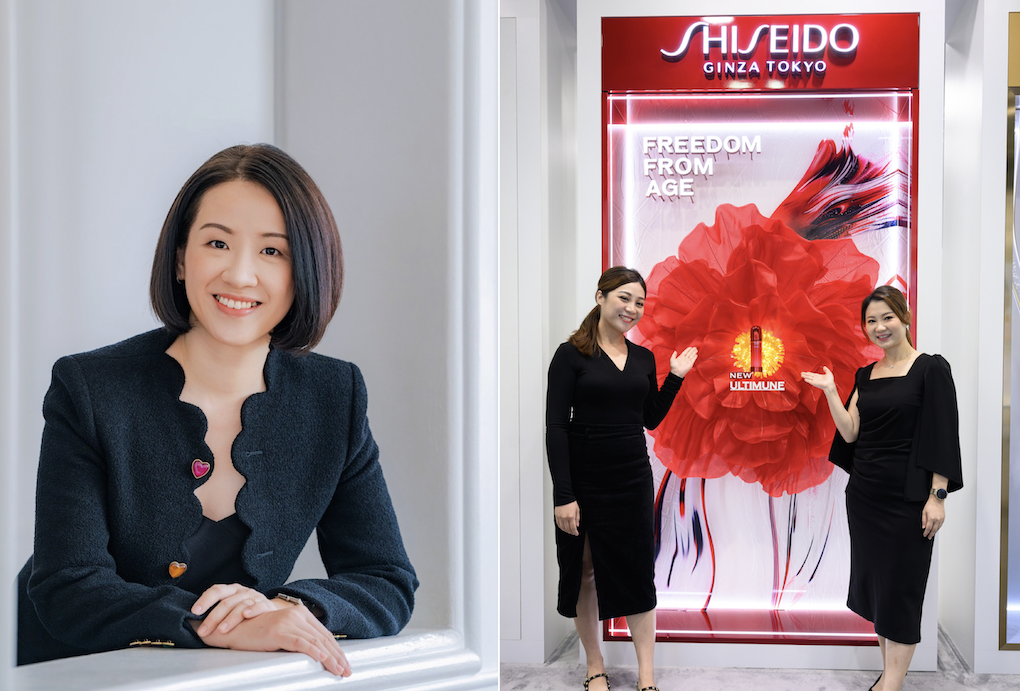US. Ultimately, Simply turned out to be anything but. Clinique’s new women’s fragrance (The Moodie Report.com, 3 September 2003) was born of a complex, five-year labour of love that began with the ephemeral scent of a first-born son and ended on the first floor of Takashimaya New York. Fortunately, its creator Raymond Matts – vice president of corporate fragrance development worldwide for the Estée Lauder Cos – is made of pretty stern stuff.
It all started when Matts decided to do something different. “A lot of my colleagues in the industry were saying I only knew how to do fresh, floral fragrances, which motivated me to say “˜I’ll show you’,” he reveals. “I thought about going into an area I’d never been particularly fond of, namely the oriental category. Traditionally, orientals don’t do that well in the US, because they are perceived as being very heavy and rich. As a creative, I thought this would be a nice challenge to take on.”
He continues: “The perfumery “˜rules’ say that orientals have a citrus top, vanilla, and some sort of wood, spice or incense – something that’s textural – in the background. I wanted to break those rules. So I thought that if I could bring brightness and comfort to the category in some way, perhaps I could capture a market segment that others hadn’t been able to.”
All Matts needed then was a burst of inspiration. It came from his first-born son. “Babies have a special smell,” he explains. “It’s difficult to describe – and it doesn’t last – but basically it’s the odour of mother’s milk coming through their pores. I walked into my apartment after my son was born and that was it. I could smell it in the air, in his breath, on his blanket – everywhere.”
Breast milk and babies are fairly unusual inspirations for a fragrance and Matts is quick to point out that that is not what the finished article actually smells like. “It is all about the feeling you get when you smell a baby,” he says. “At the end of the day, we sell liquid emotion. And if we do that, there should be emotion within the parts and the pieces of what you smell.”
ON THE RECORD: “AT THE END OF THE DAY, WE SELL LIQUID EMOTION. AND IF WE DO THAT, THERE SHOULD BE EMOTION WITHIN THE PARTS AND PIECES OF WHAT YOU SMELL.” – RAYMOND MATTS
So Matts sat down with a perfumer colleague and basically said, “˜Humour me; I want to create something creamy from babies’ milk’. “I sat with my son for four hours, holding a fibre-optic needle over his breath, trying the catch the molecules in the air,” he relates. “Then when I sent it to the lab the glass got broken, everything was contaminated and they couldn’t use any of it.”
Undeterred, Matts soldiered on (his resolve perhaps stiffened by son number two). “I smelled all sorts of milk,” he relates. “Low fat, 2%, skim, condensed Carnation in a can – I even had some shipped in from Europe because the pasteurisation process is different.” Then came the breakthrough.
“I smelled some soya milk,” says Matts. “And there was a cereal effect, which comes from the malt it contains, which is used to sweeten cereal. That built creaminess, but without using vanilla, which was important to me, because I wanted to do something different. There have been more than 70 fragrance launches this year and how many smell like something else? That bothers me because it’s starting to bring the industry down.”
The second piece of the puzzle fell into place after a visit to a health food store. “I was looking for a zone bar – I eat five meals a day and that’s one of my snacks,” confides Matts, “when I came across some soy nuts. I’d never had them before, but bought a bag because I’d been working on the soya milk. What intrigued me was the residue left on my hands after I’d finished eating them. It smelt coarse, it had texture and for me, it equated to the background of classic orientals. It also had a cooling effect which helped to push the milk up so it didn’t get thick and clogged on the skin.”
The third and final element came courtesy of Takashimaya in New York city. “On the first floor there’s a flower shop, and on the particular day I went in there were lots and lots of white flowers,” explains Matts. “It was unusual, and what I smelt in the air was not one specific flower, but rather the feeling you get from flowers. Again, it’s difficult to describe, but I’m talking about that velvety, dewy, wet feel you get when you touch an orchid. I wanted to use this to create a subtle halo effect, in contrast to the other two elements.
“This is the way I work,” he continues. “The inspiration comes in spurts. I build towards a sensation or feeling, and I spend years combining accords to get the proper balance. If I know what each thing smells like on its own then I know what it should represent in its total form. It’s very hard to do it this way, because you have to go back and rip the formula apart. And very few perfumers will work with me, because I make a lot of work for them. But what I’m trying to do is go back to the craft of perfumery, as it once was. To an extent the industry has lost this because marketing people are making all the choices and they are driven largely by what’s been successful in the past.”
ON THE RECORD: “I’M TRYING TO GET BACK TO THE CRAFT OF PERFUMERY, AS IT ONCE WAS. TO AN EXTENT THE INDUSTRY HAS LOST THIS BECAUSE MARKETING PEOPLE ARE MAKING ALL THE CHOICES AND THEY ARE DRIVEN LARGELY BY WHAT’S BEEN SUCCESSFUL IN THE PAST.” – RAYMOND MATTS
Matts is a maverick in other areas too. “I don’t ever talk about top, middle and bottom notes,” he declares. “There’s this perception that the top note is the first thing you smell, that that disappears and you’re left with something else [the heart] and then the base. That’s not the case. If a fragrance is created properly, all the molecules in all the ingredients – based on volatility – will come up together and work in harmony to create a fragrance. The point is that everything should work together.”
He continues: “While we’re on the subject, nothing irritates me more than a picture of an olfactory pyramid. That doesn’t mean a thing to most consumers. It doesn’t help to explain what a fragrance is all about. Far better to tell them they’re going to experience something that is comfortable, or bright or cosy – I can live up to that when I spray a fragrance in the air. I’m not having to live up to “˜can you smell this or that ingredient?’. And I don’t run the risk of a customer walking away because they’ve seen an ingredient they don’t like, even if they can’t actually smell it.”
Matts also holds strong views on the way fragrance should be sampled. “At the counter, most people spray fragrance on their wrist, smell it for a second and then decide straightaway whether or not they like it – that’s the biggest mistake you can make. I’ve spent months travelling around the world training consultants how to work better with customers, and helping them to understand that fragrances take time to develop.”
Blotters are another issue. “Too many consultants saturate the blotter and hand it to the customer, who then aren’t smelling the fragrance as they should,” he explains. “It has to breathe. Paper blotters are meant for those of us who create. They slow the process down so we can see if there’s a problem. They need to be used properly.”
But spraying directly onto skin is not without its drawbacks too. “A lot of people blame their skin type if a fragrance doesn’t instantly smell the same on them as it does in the air,” says Matts. “The problem is that they’re smelling it too close to the nose and the brain can’t decipher it. If you smell it from further away then the brain can interpret it. What we’re saying is spray a shirt sleeve instead, walk around and let the fragrance come to you versus going to the fragrance. The analogies I’ve been using is that when you open a bottle of wine you let it breathe; and you stand back to look at a picture in a gallery. It’s basically a re-education process.”
Matts might be unconventional but he’s got plenty of commercial nous. “Simply rounds out Clinique’s portfolio,” he explains. “We have our citrus floral, Happy; and Happy Heart, a richer floral. Aromatics is a chypre, and now we have our oriental – or rather an evolution of what an oriental could be. I hope it evolves into a classic for our generation.”
He continues: “One of the problems we face is that the industry keeps going back to the big fragrances of the 60s, 70s and 80s – but it only captures a twist of what was done. The same notes are being used over and over again to get that commercial viability. I understand why – when the research is done, the same notes score well because people like what’s familiar. What I’m doing instead is taking real life situations which have an associated odour, capturing it and that becomes my commercial viability. It’s about emotions more than ingredients – for example, the creaminess of milk, as opposed to milk per se.”
Matts has some pretty forthright views but he’s certainly earned them. He’s been creating fragrances for close to 19 years – seven of which have been spent within the Estée Lauder fold. Yet he got involved in fragrance almost by accident. Having acquired degrees in economics and criminal justice Matts considered the FBI before dabbling in law school. He then decided to go back to college and with regard to curriculum it was a toss-up between wine-making and cosmetics, fragrances and toiletries. “This is where I was shallow, and thought I’d meet a lot of women if I moved to New York City and studied fragrance,” he grins.
Matts earned his stripes on the front line, selling Aramis and Elizabeth Arden on-counter. The big break was a stint at Firmenich creating personal care fragrances. “I worked on everything from toilet bowl cleaners to laundry detergents,” he reveals. “It was the best education because I learned how to work with something ugly and make it beautiful – and I acquired good technical expertise.”
That job led to a position at IFF, where Matts started working with fine fragrances, the first of which was Elizabeth Taylor White Diamonds. That was followed with five years at Elizabeth Arden, before the move to Lauder materialised. “I report to Evelyn [Lauder] who is a breath of fresh air,” maintains Matts. “She doesn’t stifle creativity at all and in this industry it’s very difficult to find people like that.”
ON THE RECORD: “I’M TIRED OF SEEING ALL THESE NAKED BODIES IN ADS…I JUST THINK WE NEED ANOTHER WAY TO TALK ABOUT EMOTION.” – RAYMOND MATTS
Matts has obviously invested a lot personally in Clinique Simply – so is he glad that his five-year mission has finally come to fruition, or is there a sense of anti-climax? “I’ve really enjoyed it,” he replies. “I just hope that people can find the beauty I see in it. I wanted to do two things. I wanted to create a fragrance that women would want to adorn their bodies with after smelling it in the air. And I wanted men to be drawn by it, to want to smell more. Because when I smell it, I see the subtleties and nuances and I think, I want to get closer. And that’s what a fragrance should do. It shouldn’t repel – it should bring intimacy instead.”
For intimacy, do not read nudity. “I’m tired of seeing all these naked bodies in ads,” sighs Matts. “A women – or a man, for that matter – is more alluring when there’s something left to the imagination. And I’m not sure how a shot of a naked woman entices female consumers to buy a fragrance, anyhow. Sure, there can be some sex in the mix, but can’t it be a little more flirtatious and teasing, versus in your face? I just think we need another way to talk about emotion.”
And if that means harnessing the hidden qualities of milk, nuts and Japanese department stores, so be it. The FBI’s loss is Estée Lauder’s gain.




